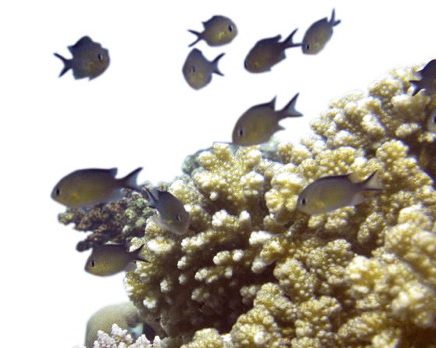Data & Code
- Protocol and programs for mortality threshold analysis, designed and calculated with MATLAB R2007b. https://doi.org/10.1371/journal.pone.0029535.s002
Citation: Thornhill DJ, Rotjan RD, Todd BD, Chilcoat GC, Iglesias-Prieto R, Kemp DW, et al. (2011) A Connection between Colony Biomass and Death in Caribbean Reef-Building Corals. PLoS ONE 6(12): e29535. https://doi.org/10.1371/journal.pone.0029535
2. Data from: A connection between colony biomass and death in Caribbean reef-building corals. https://datadryad.org//resource/doi:10.5061/dryad.gm005fg8/1
Citation: Thornhill DJ, Rotjan RD, Todd BD, Chilcoat GC, Iglesias-Prieto R, LaJeunesse TC, Kemp DW, Reynolds JM, Schmidt GW, Shannon T, Warner ME, Fitt WK (2011) Data from: A connection between colony biomass and death in Caribbean reef-building corals. Dryad Digital Repository. https://doi.org/10.5061/dryad.gm005fg8
3. Protocol and programs for custom RGB color analysis with color standards, designed and calculated with MATLAB R2007b.
Citation: Burmester, E., A. Breef-Pilz, N. Lawrence, L. Kaufman, J. Finnerty, and R.D. Rotjan. 2018. The impact of autotrophic versus heterotrophic nutritional pathways on colony health and wound recovery in corals. Ecology and Evolution 00:1-12. To access this custom program (part of the supplemental materials), please click here.
4. Data from the 2017 NOAA Okeanos Explorer Cruise to the Phoenix Islands Protected Area. Located here.
Citation: Okeanos Explorer Cruise EX1703: CAPSTONE Howland/Baker PRIMNM and PIPA (ROV/Mapping). 2017 B.R.C. Kennedy, NOAA/OAR/OER (Expedition Coordinator); D. Sowers, NOAA/OAR/OER (Mapping Lead).
5. Data from the October 2017 R/V Falkor Cruise to the Phoenix Islands Protected Area. http://www.rvdata.us/catalog/FK171005
Citation: Cordes, E, R.D. Rotjan, and T. Shank. 2017. Discovering Deep Sea Corals of the Phoenix Islands. Schmidt Ocean Institute cruise FK171005.
6. Data files demonstrating that Astrangia poculata corals prefer plastic microbeads over brine shrimp eggs
(2019) Data from: Patterns, dynamics and consequences of microplastic ingestion by the temperate coral, Astrangia poculata. Proceedings of the Royal Society B https://doi.org/10.5061/dryad.3qc6328
7. Genetic sequences for larval tuna from Hernandez et al 2019 Evidence and patterns of tuna spawning inside a large no-take Marine Protected Area were deposited to GenBank and can be found at accession numbers MK567307-MK567376
Hernandez, C., J. Witting, C. Willis, S. Thorrold, J. Llopiz, and R.D. Rotjan. 2019. Evidence and patterns of tuna spawning inside a large no-take Marine Protected Area. Scientific Reports 9 (10772) https://doi.org/10.1038/s41598-019-47161-0
8. Machine-accessible metadata file describing the reported data in Helmuth et al. 2020: https://doi.org/10.6084/m9.figshare.13095506
Helmuth, B., J.J. Leichter, R.D. Rotjan, K.D. Castillo, C. Fieseler, S. Jones, and F. Choi. 2020. High resolution spatiotemporal patterns of seawater temperatures across the Belize Mesoamerican Barrier Reef. Nature Scientific Data 7(396): 1-6. https://doi.org/10.1038/s41597-020-00733-6
